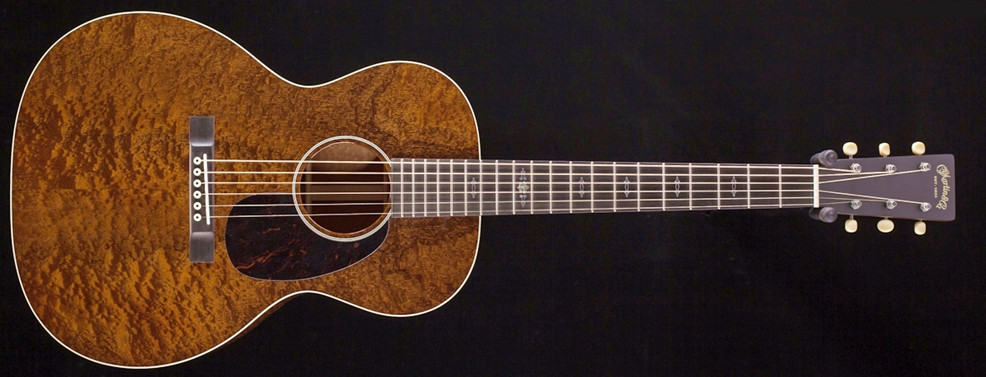Hey there, fellow guitar enthusiasts! If you’re on the hunt for that perfect acoustic sound, you’ve come to the right place. Just like with electric guitars, the strings you choose for your acoustic instrument play a HUGE role in shaping your tone and playing experience. Navigating the world of acoustic guitar strings can feel overwhelming with so many brands, gauges, and materials available. But don’t worry, after decades of playing, recording, and producing music, I’m here to share my insights and help you find the Best Acoustic Guitar Strings for your needs.
 Choosing the best acoustic guitar strings in 2023: a guide for players.
Choosing the best acoustic guitar strings in 2023: a guide for players.
Brand Loyalty vs. Reality: What String Brands Really Matter?
Let’s talk brands. You’ll see countless names in music stores, but the truth is, only a handful of manufacturers actually produce the majority of guitar strings. While brand names like “Billy Gibbons Signature Strings” might catch your eye, remember that famous guitarists aren’t personally winding your strings!
Instead of focusing solely on branding hype, prioritize consistent quality and reliability. Over the years, I’ve relied on a few key brands that consistently deliver on:
- Consistency: Strings that sound and feel the same from pack to pack.
- Dependable Ball Ends: Secure ball ends that won’t unravel or break during string changes or performances.
- Durability: Reasonable resistance to breakage under normal playing conditions.
- Longevity: Acceptable lifespan before corrosion significantly impacts tone.
Based on these factors, here are three brands that have earned my trust when it comes to acoustic guitar strings:
- D’Addario: Currently, my top choice for both electric and acoustic guitars. They offer a wide range of options and consistently deliver quality and tone.
- Cleartone: Known for their excellent coating technology, Cleartone strings offer extended life without sacrificing tone, in my experience.
- Martin: While not my absolute number one, Martin strings are a solid, dependable choice. It’s worth noting that Martin often sources their strings from other manufacturers.
 Trusted acoustic guitar string brands: D'Addario, Cleartone, and Martin for consistent quality and tone.
Trusted acoustic guitar string brands: D'Addario, Cleartone, and Martin for consistent quality and tone.
String Gauge: Finding the Right Size for Your Playing Style
Now, let’s tackle string gauge, or string thickness. The myth of “one size fits all” definitely doesn’t apply here! There’s no single gauge that’s perfect for every player and every guitar. Ultimately, the best gauge is the one that feels best to you and allows you to play comfortably and expressively.
However, there are some key principles to consider when choosing your acoustic string gauge:
- Heavier Gauge, Bigger Frets: If your acoustic guitar has larger frets, heavier gauge strings can work well. Think of Stevie Ray Vaughan, who used heavy strings with jumbo frets on his electric guitars – the same concept applies to acoustic.
- Lighter Gauge, Smaller Frets: Conversely, if your guitar has vintage-style, smaller frets, lighter gauge strings are often a better match. Putting very light strings on a guitar with large frets can sometimes lead to tuning and playability issues.
- Thicker Strings = Louder Tone: Heavier strings generally produce a louder and fuller sound. However, they also require more finger strength and may necessitate higher action (string height) for comfortable playing.
- Thinner Strings = Easier Playability: Lighter gauge strings are easier on the fingers and hands, making them ideal for beginners or players who prioritize comfort and playability, although they might sound a bit thinner and quieter.
General Gauge Recommendations:
- Medium to Medium-Light Gauge: For players seeking a balanced tone and don’t play for extended periods daily, medium to medium-light gauges are often the sweet spot. They provide a good balance of volume, tone, and playability.
- Light to Extra-Light Gauge: If you frequently play long sets, or if you’re using an acoustic-electric guitar where the purely acoustic sound is less critical, lighter gauges can offer greater comfort and reduced finger fatigue.
- Avoid Heavy Gauge: Unless you’re specifically tuning down significantly or seeking an extremely powerful, resonant tone, it’s generally best to avoid heavy gauge strings on most acoustic guitars. Heavy gauges can put excessive stress on the guitar’s bridge and neck, potentially causing damage over time. Many guitar manufacturers, like Martin, even recommend using medium gauge or lighter strings to prevent structural issues.
String Material: Bronze, Phosphor Bronze, and Coated Options
Moving on to string materials, the standard composition for acoustic guitar strings (excluding classical guitars) involves plain steel for the unwound strings (typically the high E, B, and G strings) and a bronze or phosphor bronze wrap wire around a steel core for the wound strings (usually the low E, A, and D strings).
For most players and musical situations, this standard construction is a great starting point. Let’s explore the common material variations:
-
80/20 Bronze: These strings, often referred to as “bronze” strings, are typically made with 80% copper and 20% zinc. They deliver a bright, brilliant tone that’s excellent for recording and situations where you want maximum clarity and sparkle. However, pure bronze strings tarnish relatively quickly and lose their initial brilliance faster than other types.
-
Phosphor Bronze: Phosphor bronze strings incorporate a small amount of phosphorus into the bronze winding. This addition helps to resist tarnishing and extend the string’s lifespan compared to 80/20 bronze. The trade-off is that phosphor bronze strings are generally less bright and lively right out of the pack than 80/20 bronze. Some players find their initial tone to be similar to well-played-in bronze strings. Phosphor bronze is a good choice if you want longer-lasting strings and a slightly warmer tone.
-
Coated Acoustic Strings: Coated strings have become increasingly popular, especially for acoustic guitars. While I haven’t been a big fan of coated electric guitar strings due to potential gunk buildup and tone compromise, coated acoustic strings are a different story. Because the acoustic tone relies so heavily on string vibration, maintaining string freshness is crucial. Historically, early coated acoustic strings weren’t great – they felt strange, and the coating would flake off. However, advancements in polymer technology have led to significantly improved coated strings.
Today, high-quality coated acoustic strings offer a fantastic solution for extending string life without drastically sacrificing tone. If you want to avoid changing strings constantly, especially if you play frequently or own multiple acoustic guitars, coated strings are well worth considering. The coating does subtly dampen the initial brightness, which is why I often prefer coated 80/20 bronze strings – they retain a good amount of brilliance while offering the benefits of extended life.
Material Summary:
- 80/20 Bronze: Brightest tone, ideal for recording, fastest to tarnish. Change frequently for optimal sound.
- Phosphor Bronze: Warmer than 80/20 bronze, longer lifespan, good compromise if you dislike coated strings or want a slightly less bright tone.
- Coated Acoustic Strings: Prolong string life significantly, slightly less bright than uncoated initially, excellent for convenience and consistent tone over time. Coated 80/20 bronze is a great option for balanced brightness and longevity.
Beyond the Basics: Esoteric String Options
Finally, let’s briefly touch on some of the more “esoteric” or niche acoustic string types. In some cases, these can offer genuine advantages, while others might be more marketing hype than practical benefit.
-
Flexible Core (Silk and Steel): Strings like Martin’s Flex Core SP series are designed with a softer core, often incorporating silk. These strings offer a very comfortable, “luxurious” feel under the fingers and reduced finger fatigue. They might not be ideal for every situation, but for long solo acoustic gigs or players who prioritize maximum comfort, they can be fantastic.
-
Cryogenically Treated Strings: Strings treated with extreme cold temperatures (cryogenics) are sometimes marketed as having enhanced tone and longevity. In my experience, they tend to sound harsh and brittle, and I haven’t found them to be an improvement.
-
Balanced Tension Sets: These string sets are designed to have more even tension across all strings. They’re essentially variations in string gauge combinations. If you prefer a very balanced feel across the fretboard, they might be worth trying, but the difference is often subtle.
-
Unusually Hard Metals (Stainless Steel, Titanium, Chrome, etc.): Strings made from very hard metals are generally something to avoid on acoustic guitars. They often sound harsh and can even cause excessive fret wear. I once saw a player use stainless steel strings on a Telecaster, and they wore grooves into the frets incredibly quickly.
-
“Boutique” Strings from Micro-Manufacturers: While I appreciate boutique products in many areas, guitar strings are one area where consistency is paramount. Large, established string manufacturers with precision CNC machinery can achieve far greater consistency in winding and quality control than smaller “boutique” operations.
Final Thoughts
So there you have it – my take on acoustic guitar strings after many years of playing and experimenting. Ultimately, the best acoustic guitar strings for you will depend on your individual playing style, guitar, and tonal preferences. Don’t be afraid to experiment with different brands, gauges, and materials to find what works best for you. Trust your ears and your fingers, and enjoy the journey of discovering your perfect acoustic tone!
Feel free to share your own string preferences and experiences in the comments below. Happy playing!

